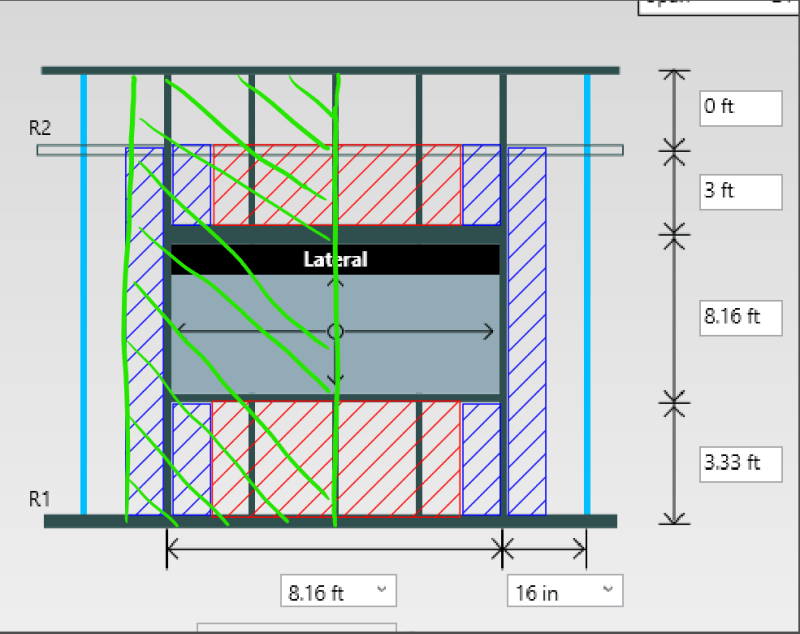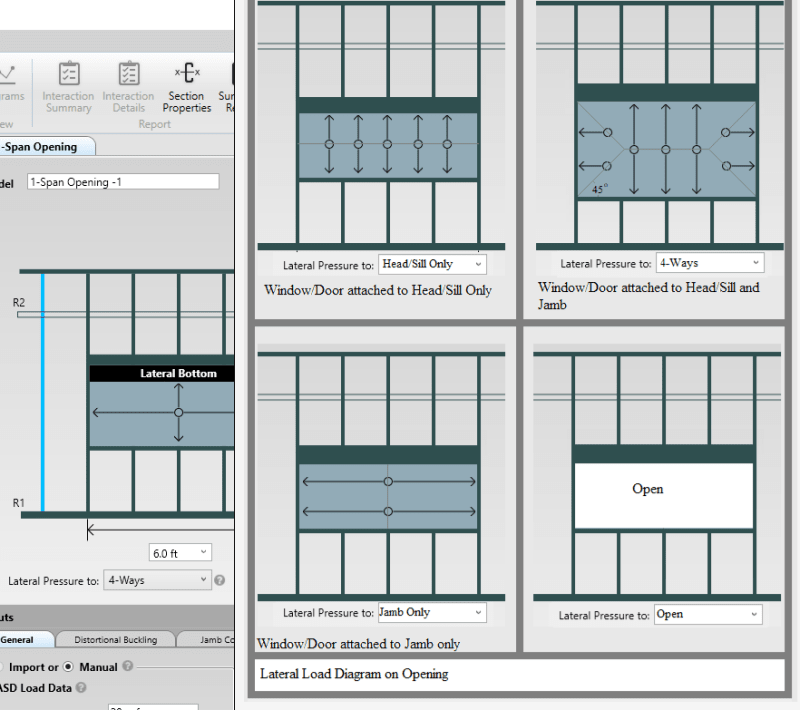Revv
Structural
- Aug 23, 2021
- 87
Hey guys,
So my understanding is a jamb stud would have the same lateral trib width as a normal stud unless you have a stud over/under the opening closer to it than normal spacing. When I run Simpson CFS designer, it seems to not add that trib width over the opening as if there is a stud immediately adjacent to it above/below the opening.
Anyone have any ideas why it's running like this? Image attached for reference
So my understanding is a jamb stud would have the same lateral trib width as a normal stud unless you have a stud over/under the opening closer to it than normal spacing. When I run Simpson CFS designer, it seems to not add that trib width over the opening as if there is a stud immediately adjacent to it above/below the opening.
Anyone have any ideas why it's running like this? Image attached for reference


